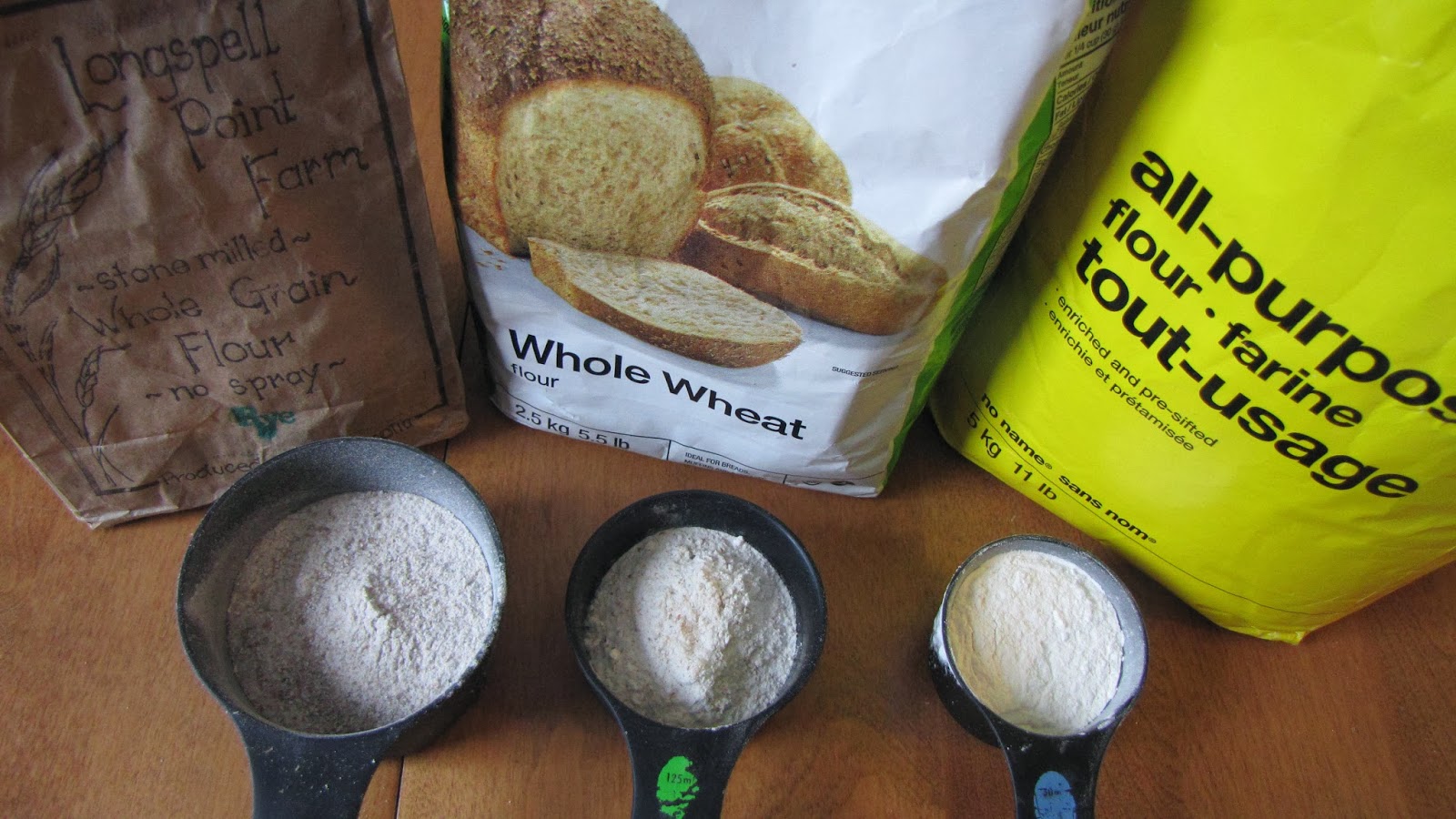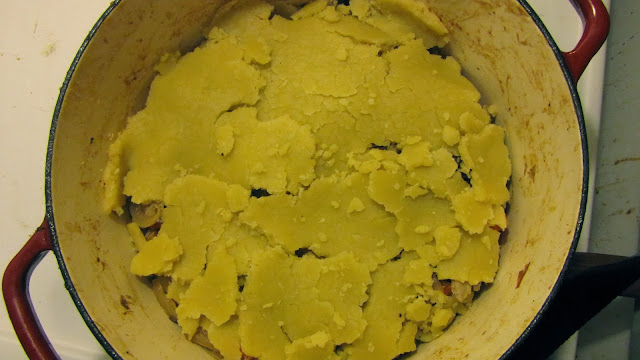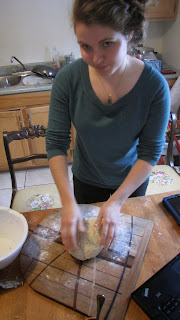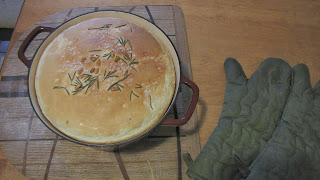I have yet to really get into gluten-free cooking. Despite having several celiac and/or gluten-intolerant friends, I have found myself unable to dedicate time to it. I love whole wheat flour, and rye bread, and the stretchiness of a pie dough. One day, I will experiment with coconut and quinoa and corn and rice flours, but that day is not this day.
There's a blizzard outside today.
This calls for slices of thick, glutinous, chewy, homemade bread. And possibly soup later. Today is a day wherein I celebrate the beauty of gluten with three different flours. Here we go. Below are my compatriots:
Let me introduce you to Longspell Point Farm rye flour, and generic whole wheat and white flour. All three are in this loaf today. We start off by mixing all three. This is an adapted recipe which originally uses only rye and white flours, but I didn't have quite enough rye. So, in a classic I-don't-wanna-go-shopping moment, we're using whole wheat to make up the difference. So the amounts today are:
1 3/4 cups white flour
1/2 cup rye flour
1 1/4 cups whole wheat flour
1 3/4 tsp salt
1 tsp yeast
2 tbsp unsweetened cocoa
Into this, we mix
2 tbsp honey or molasses
1 1/2 cups warm water
2 tbsp melted butter (browned, in my case)
I love brown butter. This is an affection I've inherited from my mother, who makes a WICKED soy-balsamic-brown-butter sauce, and Joy the Baker. Here's an action photo for you:
Once the wet is mixed into the dry and kneaded until just slightly tacky (an operation which may require adding more flour a tablespoon at a time), it's time to rise! This is where the beloved oven comes in: cover the bottom of the pan with rolled oats or corn meal or a good layer of flour (to prevent sticking), and plop in the dough!
I chose to knead in some oats in this loaf... but I should really emphasize COVERING the bottom of the pan with ANYTHING to prevent sticking. I ended up losing some of the bottom. Anyway, cover the pot and leave for 1-2 hours in a warm place until it looks like this:
Time to put on music, wash things, take more pictures, make cocoa, and preheat the oven to 375. Pop the doubled dough in for anywhere between 30 minutes to an hour - however done you want it. After it pops out, and you've cried several times about the loaf being stuck to the bottom of the oven, it should eventually accede to your wishes and pop out of the baking dish looking like this:
...not really. This is an alternate recipe that wasn't actually made in the dutch oven but turned out looking a lot better. Here's the actual result:
Looks okay up top, but flip it over...
AHHHHHH! Mangled. Always coat the bottom of the pan with something. Still, it's good with jam. Enjoy, folks, and I wish you all the success in the world.






































